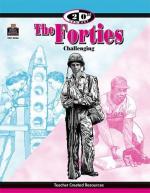|
This section contains 384 words (approx. 2 pages at 300 words per page) |

|
Fermi Achieves the First Chain Reaction.
In late 1942 — in a squash court under the stands of Stagg Field, the unused University of Chicago football stadium — a group of physicists led by Enrico Fermi, who had received the 1938 Nobel Prize in physics for his work with radioactivity, constructed a chain-reacting nuclear pile with six tons of uranium metal and fifty tons of uranium oxide encased in four hundred tons of graphite. On 2 December Fermi slowly withdrew the reaction-control rods. As the clicks of neutron counters increased steadily, reminding those present of "a mounting frenzy of crickets," Fermi announced that the pile had reached critical mass, that is, enough material in the pile had become radioactive to create a chain reaction by means of nuclear fission (the splitting of the atomic nucleus). Thus, he achieved the first controlled release of nuclear energy.
Nuclear Physics and the War Effort.
|
This section contains 384 words (approx. 2 pages at 300 words per page) |

|




